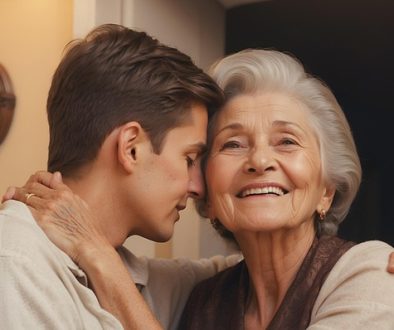Medicaid Eligibility: What is the Community Spouse Resource Allowance?
Mom and Dad still live in their home. They’re advancing in age, to put it lightly, but luckily they’ve been otherwise healthy … until recently. Your mother’s health has taken a turn for the worse in the last year, and it’s clear the care required will soon be beyond the family’s capacity. Medicaid eligibility will cover long-term care at home or in a facility, regardless if she’s received a diagnosis of dementia, a terminal illness or if her health is merely slipping with age.
Married couples with one healthy spouse not currently requiring coverage can still qualify for Medicaid under certain income and asset thresholds. But the Community Spouse Resource Allowance (CSRA) allows the non-applicant spouse to retain enough resources to live comfortably.
Understanding Florida Medicaid Eligibility Rules for Spouses
So what’s with all these terms? What in the heck is a “community spouse?” Sounds icky, like having to share your beloved husband or wife. Relax. It’s just the term for the non-applicant spouse, who remains in the community — aka the “healthy” or “well” spouse. The term “institutionalized spouse” is a bit of a misnomer because this spouse — the applicant — may never be “institutionalized” at all and may, in fact, receive benefits covering both home and community care options. “Resources” are most often referred to simply as assets. (Don’t mind me rolling my eyes at the needless silliness and confusion associated with this otherwise helpful program.)
Medicaid helps individuals and families with limited means to afford astronomical long-term care costs. But first it ensures those with sufficient assets and/or income haven’t artificially deflated their net worth to achieve eligibility for assistance. While income and assets above limits must be spent down or distributed legally and ethically, Medicaid in most states does allow families to keep “resources” for living expenses.
The Community Spouse Resource Allowance is one of those measures.
So What Does the CSRA Do?
Medicaid understands its role serving individuals and families with little income and assets. They always verify those served actually meet those qualifications through financial/asset disclosures and a very thorough 5-year lookback process. But they won’t leave a non-applicant spouse (“community spouse”) with little to no money to live independently.
The Community Spouse Resource Allowance (CSRA) allows the non-applicant to retain assets up to a certain amount. Here in beautiful Florida — a 100% state — that maximum figure in 2021 was $130,380. The applicant spouse could keep $2,000.
The federal program is administered by the states, ultimately leaving maximum and minimum income and asset limits for Medicaid eligibility up to the states’ discretion. In 100% states like ours, non-applicant spouses are entitled to all of their joint assets up to the maximum resource allowance.
Some examples specific to Florida:
- The married couple has $350,000 in assets. The non-applicant (“community spouse”) may retain $130,380 of that sum. The applicant may retain $2,000, leaving $217,620 that must be spent down or given to family, friends and/or trustees.
- The married couple has $97,000 in assets. The non-applicant may retain the entirety of that sum, as it is under Florida’s maximum CSRA.
Spending down or distributing any remaining assets, if necessary, should be done before the Medicaid 5-year lookback to avoid an ineligibility penalty period.
Do All Assets Count?
No. The Medicaid-eligibility process and its Community Spouse Resource Allowance lump assets into countable (non-exempt) assets and non-countable (exempt) assets.
Countable assets include items with easily calculated monetary value with no daily-living or sentimental worth:
- Cash
- Stocks, bonds and other investment portfolio elements
- Non-residential properties
Non-countable assets include items that would have value for daily living or sentimentality:
- Primary residential property, including furniture and appliances (if the non-applicant spouse lives there)
- A primary-use vehicle
- Clothing
- Irrevocable funeral and burial trusts
- Life insurance policies (typically up to $1,500 in value)
It’s easily understood when you breakdown the nature of each type of asset and its importance to daily life.
Is There a Spouse Monthly Income Limit?
Yes. The Minimum Monthly Maintenance Needs Allowance (MMMNA) for Long-Term Care Medicaid allows non-applicant spouses with little (or no) steady income to take some (or all) of the applicant spouse’s income for living expenses. Here in Florida (and 47 other states) the MMMNA in 2021 was $2,177.50 per month. The maximum in 2021 was approximately $3,260 per month.
The MMMNA essentially ensures that the non-applicant has enough regular income to survive, if they don’t make enough on their own. It, too, is based on an easily understood formula in alignment with the Federal Poverty Level. Some examples:
- A retired, non-applicant husband has a monthly income of just $1,750 via Social Security. Based on 2021 figures, he was eligible to transfer the difference — $427.50 — of the applicant spouse’s monthly income.
- A working, non-applicant wife has a monthly income of $2,200 between part-time employment and Social Security. She was over the minimum and ineligible to transfer income.
What Happens When Both Spouses Apply?
Medicaid eligibility gets a lot easier when both spouses apply. Both spouses need long-term care, therefore both must have income and assets at or below limits. The CSRA and MMMNA go away, as they are no longer needed.
Care for both Institutional/Nursing Home Medicaid and Home and Community-Based Services Medicaid cap joint assets at $3,000 and combined income at $4,764 per month (or $2,382 per spouse).
We Can Help with Your Medicaid Eligibility & Asset Protection in Florida
Caregiver Support & Resources, LLC works with elder-law attorneys, and we can legally and ethically protect people’s assets to help them qualify for Medicaid and VA attendance.
Medicaid, unlike Medicare, will cover most long-term care costs. Once we obtain Medicaid eligibility for an individual, if they remain within the Medicaid guidelines, they will have eligibility for the rest of their lives. Likewise for VA aid and attendance.
There’s no reason an elder or their spouse should live in poverty for transitioning to higher levels of care. Our clients, their families and future generations may still live in comfort and dignity.
(Editor’s Note: Caregiver Support and Resources, LLC is not a law office. Maureen Rulison is not an attorney. The information contained in this blog is not to be construed as legal counsel or advice or substituted as such in any U.S. state, territory, locale or foreign state where it can be accessed. Rather, this blog is meant only to educate elders, care partners and families as to legal processes around life care planning.)




